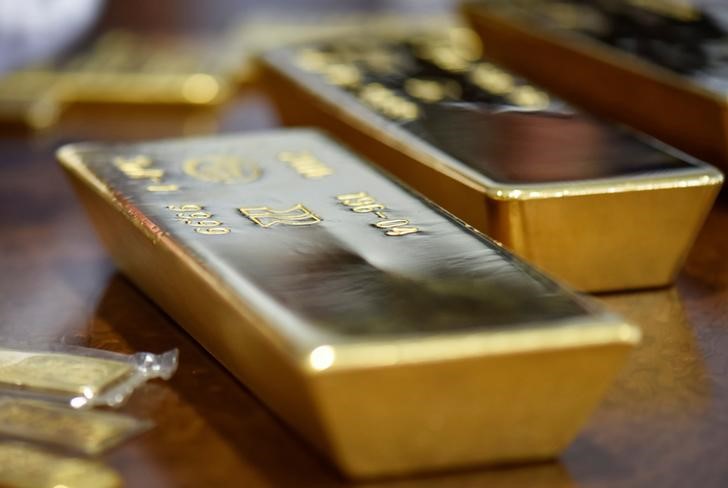Investing.com - Gold prices edged lower in the first trading session of the new year on Tuesday, erasing overnight gains as the U.S. dollar resumed its rally with markets focused on the possibility of further U.S. interest rate hikes in 2017.
Gold for February delivery on the Comex division of the New York Mercantile Exchange shed $3.95, or 0.35%, to $1,147.85 a troy ounce by 9:20AM ET (14:20GMT). Prices rose to a session high of $1,159.25 earlier.
The gold market was closed on Monday after the New Year's holiday.
The U.S. dollar resumed its rally on Tuesday, climbing back toward its 14-year-high against a basket of currencies as the prospect of rising U.S. interest rates this year kept sentiment bullish.
The U.S. dollar index, which measures the greenback’s strength against a trade-weighted basket of six major currencies, was up more than 1% at 103.42 in early trade, within sight of a 14-year peak of 103.62 touched on December 20.
Market analysts warned that the outlook for gold remains cloudy in the near-term amid expectations of U.S. interest rates rising more rapidly during the incoming Trump Administration.
Prices of the yellow metal have fallen sharply since Donald Trump was elected president as a soaring U.S. dollar, rising Treasury yields and a record-breaking rally on Wall Street have dampened its appeal.
The precious metal is sensitive to moves in U.S. rates, which lift the opportunity cost of holding non-yielding assets such as bullion, while boosting the dollar in which it is priced.
Both a strong dollar and higher interest rates are typically bearish for gold, which is denominated in dollars and struggles to compete with yield-bearing assets when borrowing costs rise.
Also on the Comex, silver futures for March delivery added 3.8 cents, or 0.25%, to $16.02 a troy ounce during morning hours in New York.
Meanwhile, platinum jumped 3.7% to $938.85 and palladium rallied 3.8% to $709.30 an ounce.
Elsewhere in metals trading, copper futures dipped 0.4 cents, or 0.14%, to $2.502 a pound.
Signs of solid factory growth in China, the U.K. and Europe gave the global manufacturing sector a solid boost heading into the new year.
The China Caixin manufacturing purchasing managers' index, a private gauge of nationwide factory activity, rose to 51.9 in December from 50.9 in November, data released earlier showed. The figure marked the strongest upturn in Chinese manufacturing conditions since January 2013.
In the U.K., manufacturing activity registered an unexpected increase in December, hitting a 30-month high and bolstering confidence over the British economy.
Data released Monday showed that manufacturers in the single currency bloc ramped up activity at the fastest pace in more than five years.
